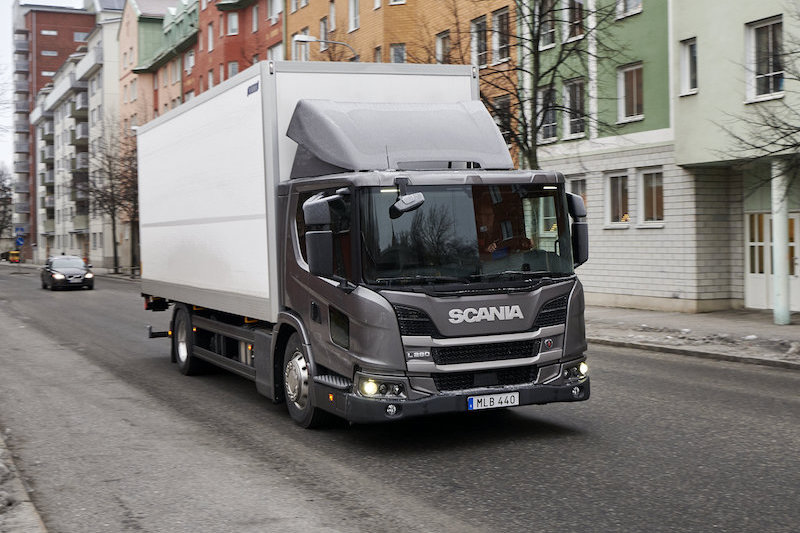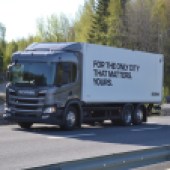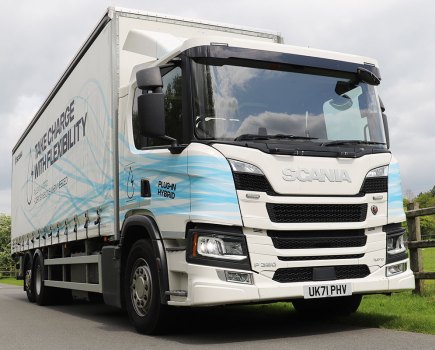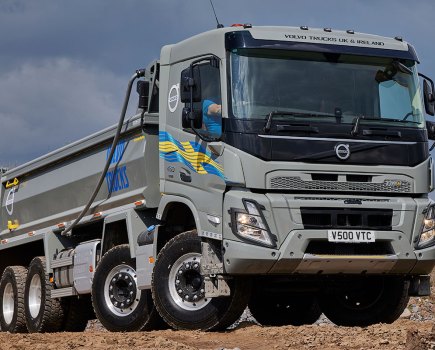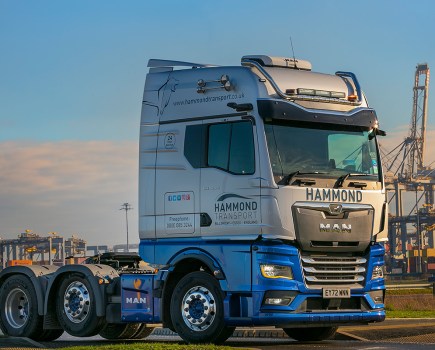Scania is targeting inner-city operators hard with its latest lighter-weight trucks. Here we put its all-new L and top-selling P cabs to the test
Truck operations within city centres are becoming increasingly complex. Drivers venturing into large urban sprawls have a lot to contend with, not least heaving traffic and risk to pedestrians and cyclists.
But operators don’t have it easy either. Alongside the increasing need to adhere to compliance schemes such as CLOCS and FORS (see page 30 for our special report), widening clean air initiatives are putting pressure on hauliers to be very careful indeed with how they spec the vehicles.
Scania hopes its latest urban offerings will prove a good fit for firms looking to operate responsibly in the city, and we had the opportunity to test drive its new L and P cabs at a press test event at the manufacturer’s HQ in Södertälje, Sweden.
L cab
The new L (low-entry) cab is intended to be spec’d for distribution, refuse collection or construction and has low, normal and high roof heights. An optional kneeling function lowers the cab to make entry and exit easier, and is engaged automatically to lower the cab 10.5 cm to bring the floor height to around 80 cm (depending on tyres), meaning only a single step is required. (Two steps are necessary on non-kneeling L cabs, as the floor height is then around 93 cm.)
L-series trucks have a set-back front axle much like a bus, which means the boarding step can be extra-wide (79 cm across) and enables drivers to exit the cab forwards if required.
An access tunnel across the inside of the cab is another benefit, enabling drivers can easily move across to exit on the passenger side if they are parked in a busy street.
We put all this to the test during our drive of an L280 4×2 sporting Scania’s latest 280 bhp 9-litre engine and 12-speed Opticruise gearbox. Hopping aboard the kneeling cab is easy indeed and will certainly save the knees of drivers who are in and out of the truck all day long.
Visibility is also immediately impressive. L-cab keeps the driver at roughly eye-level with pedestrians and cyclists, and this combined with Scania’s new set-forward driving position, low dashboard, narrow A-pillars and thinner mirror posts help eradicate blindspots.
Loaded to 14.5 tonnes, we took off for a mocked up ‘city station’ which aimed to throw a few of the more common inner-city obstacles our way – such as badly parked cars, and market stalls jutting out into the road. Weaving the L through narrow street passageways and negotiating T-junctions was made easier thanks to the truck’s particularly tight turning circle.
Scania has fitted this L280 with its new City Safe Window, which enables the driver to see through a part of the passenger-side door to check for pedestrians etc. The window is single-glazed and means the main passenger side window is unable to be opened (though bizarrely the controls still remain!), and it does give a useful amount of extra visibility for lone drivers.
However, if you are riding with a passenger, the window is next to useless as it is obscured by their legs.
Out of the ‘city’, we took the truck onto the open road and found the L gives a relaxed drive. We were happy to let Scania’s recently upgraded Opticruise 12-speed automated ’box do all the work, and this truck was fitted with an automatic engine brake which is engaged with the brake pedal, rather than the stalk – leaving the driver freer to concentrate on the road.
Also useful is the auto hill hold, which engages the automatic parking brake to hold the truck indefinitely on an incline, rather than timing out after a few seconds.
When it’s time to switch off and hop out the cab, the parking brake engages automatically when you unfasten the seatbelt or open the door, and the L-cab quickly kneels to enable the driver to exit easily.
Curiously, it’s not yet possible to spec an L-cab with Scania’s new 7-litre engine. It’s something of a missed opportunity, as it would be a no-brainer for operators to use it instead of the 9-litre to benefit from weight and efficiency savings (7-litre lump gives up to 10 per cent better fuel returns than previous EGR 9-litre engine, according to Scania).
Purchase price would also be lower – Scania told us the 280 bhp 7-litre engine is £1500 cheaper than the equivalent 9-litre. It also better suits city work – the smaller engine offers a bit more agility at lower revs than the 9-litre, which is all the better for navigating busy streets.
We put the question to a Scania representative, who suggested 7-litre L cabs would indeed arrive “in due course”.
P cab
Scania reckons P-cab is its most sold model for urban operations, and it can now be specified with the new 7-litre engine for additional weight and fuel savings. We made a bee-line for a 7-litre P280 6×2 to take it for a trip into downtown Södertälje.
Loaded to 23 tonnes, the truck was running on HVO (Hydrotreated Vegetable Oil; Scania is running its entire test fleet on HVO instead of diesel now) – and as per our previous drives with the greener fuel, we were hard-pressed to tell the difference.
Torque from the 280 bhp 7-litre is 1200 Nm – not very strong, but enough for city applications. We reckon the 12-speed Opticruise as fitted to our test truck is perhaps a better spec than eight-speed option because it offers tighter performance between gears, giving the feeling of more power than you actually have with such a small engine.
Two-stage engine brake can be activated by brake pedal and via stalk. Again, we didn’t find it very powerful because of the smaller engine, but it still saves some wear on service brakes. A retarder is optional, but there’s no real need for city distribution – it’s extra weight, extra money, and a city truck will rarely reach the speeds required for a retarder to work efficiently.
Our drive took us into the city centre and around various commercial and residential areas, and we found the visibility from the P-cab to be very good indeed – though there was no City Safe window on this truck. The 7-litre ate up the few hills we encountered with ease, and its sprightly performance around town made life pretty easy.
The engine is also very quiet and we found the P cab a peaceful place to work. Operators making night deliveries will also find this a boon.
One thing we did note is the engine tunnel in our truck was the same height as with P-cabs spec’d with the 9-litre lump. Bit of a shame, as extra space inside the cab is always useful.
Verdict
With city road transport operations under close scrutiny, operators are rightly more cautious than ever to ensure their distribution vehicles are properly spec’d for safety, while at the same time maximising driver comfort and efficiency.
Scania’s new urban range certainly meets these needs.
The P-cab is a winner, offering a comfortable ride and nippy performance – and when spec’d with the efficient, cheaper and lighter 7-litre engine, it makes for a compelling offer.
We reckon drivers who are regularly in and out of the cab will find much to like with the L series, though it is a shame it isn’t yet available with the 7-litre engine.

